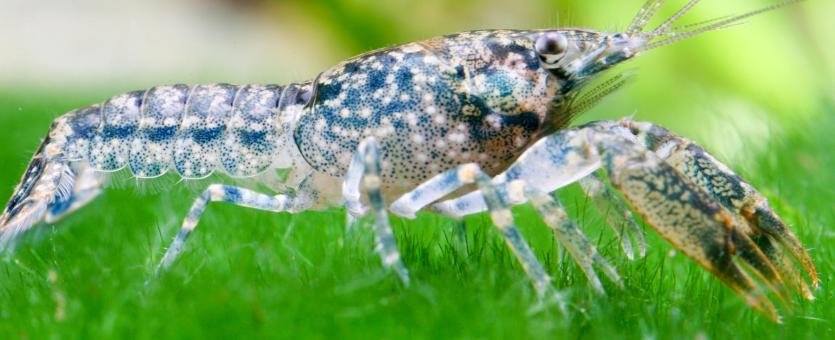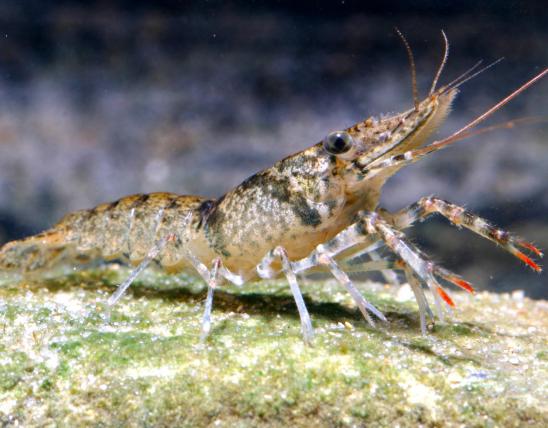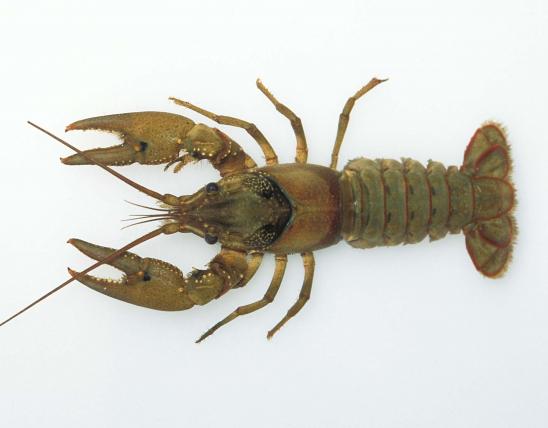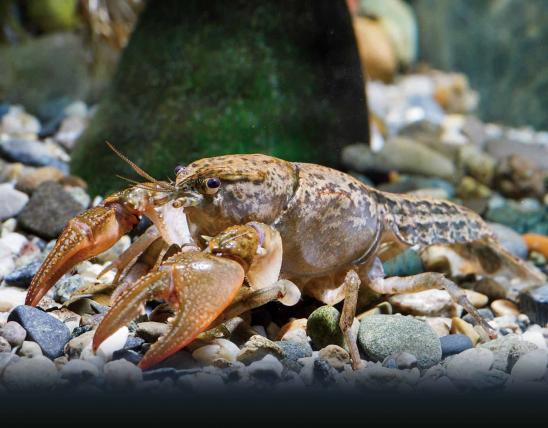
The Cajun dwarf crayfish is one of two Missouri species of dwarf crayfish, which are appropriately named for their size. Both are reddish brown to gray, with a paired series of dark, wavy stripes or dashed lines along the dorsal (top) surface. The tail fan usually has a dark central blotch. The pincers are narrow and long. The Cajun dwarf crayfish is distinguished from the similar-looking Shufeldt’s dwarf crayfish by examining the male reproductive structures, which are curved in the Cajun, and straight in Shufeldt’s. The two are rarely found in the same body of water.
Our two dwarf crayfish can be distinguished from the young of other lowland crayfish by the conspicuous dark pigment in the tail fan, and the lengthwise dark stripes or lines on the carapace. Also, the rostrum (pointed, noselike structure between the eyes) is flat, without a central troughlike depression.
Adult length: 1 to 1½ inches. Most do not get much larger than an inch.

These small crayfish occur sporadically throughout the Bootheel lowlands.
Habitat and Conservation
Cajun dwarf crayfish are found in shallow, temporary pools during wet seasons, including swamps, sloughs, and roadside ditches. This species is not usually found in the central, more intensively ditched and drained part of the lowlands and was probably more abundant and widely distributed in that region in presettlement times, when shallow, standing-water habitats were more extensive.
Food
Crayfish are generally omnivores, eating a wide variety of plant and animal materials.
Status
While apparently secure over its entire range, this species is vulnerable to being extirpated from the state and is listed as a species of conservation concern. It appears that Shufeldt’s dwarf crayfish is dominant over the Cajun dwarf crayfish, and when the two occur in the same water, Shufeldt’s outcompetes the Cajun. This may explain why, in the state of Louisiana, Shufeldt’s seems to be expanding its range while the range of the latter is shrinking.
Life Cycle
Breeding can occur at almost any time of year the crayfish are active, often with two seasonal peaks: in late winter to early spring, and in midsummer. Although some young hatch, grow, and mate during their first year, most mate for the first time the next spring, when they are nearly one year old. As with other crayfish, as they grow they shed their shell-like exoskeletons. Unlike many other species, dwarf crayfish breed while still less than 1½ inches long.
Human Connections
Because of their small size, dwarf crayfish are not generally used by humans as food or bait.
Ecosystem Connections
Dwarf crayfish are eaten by the fish, turtles, wading birds, and other vertebrates that share their habitat.
































